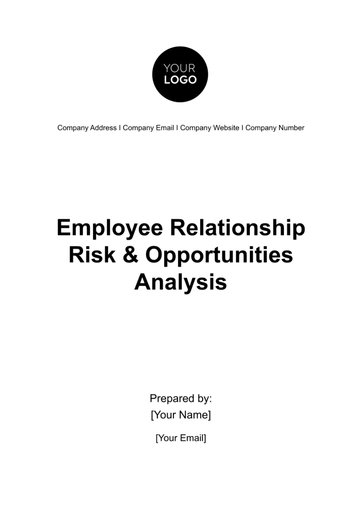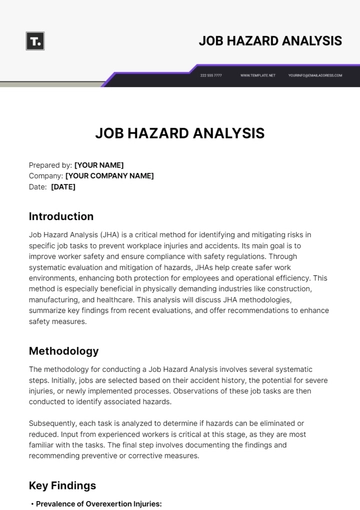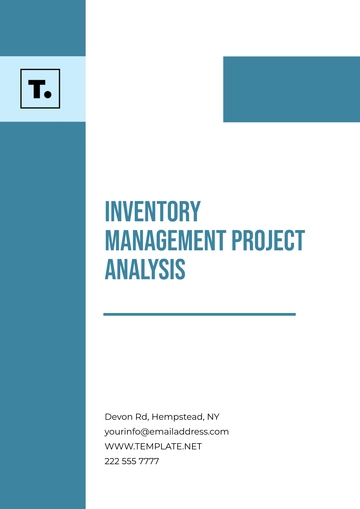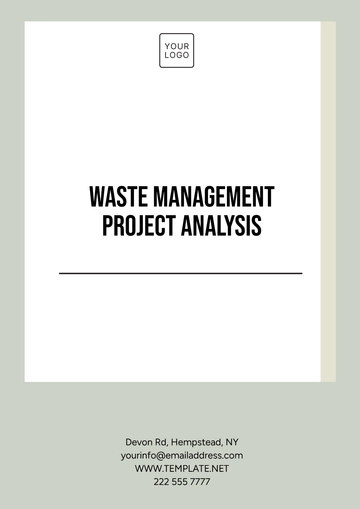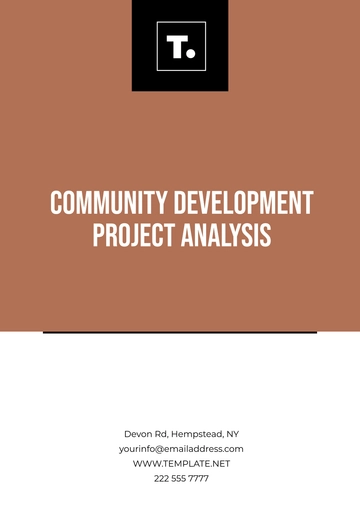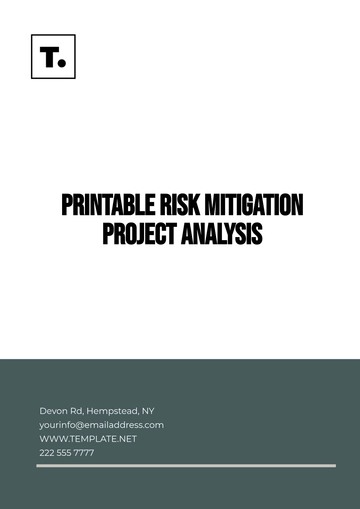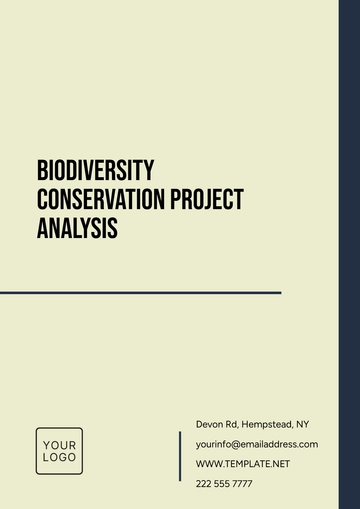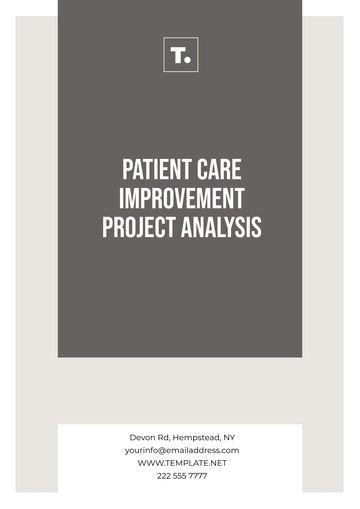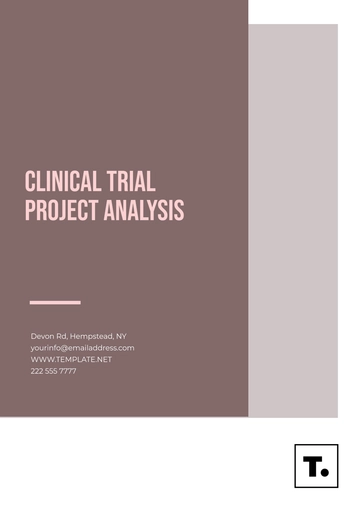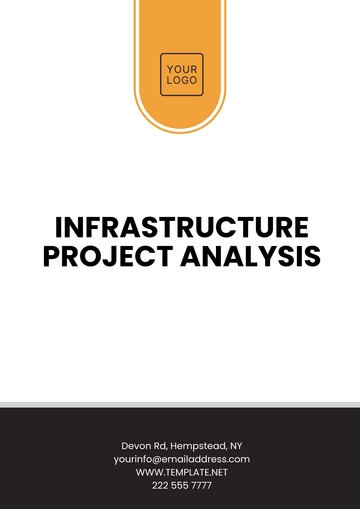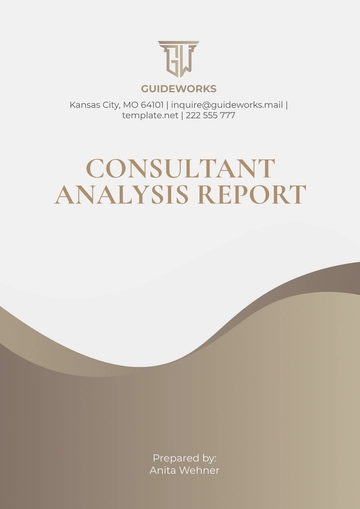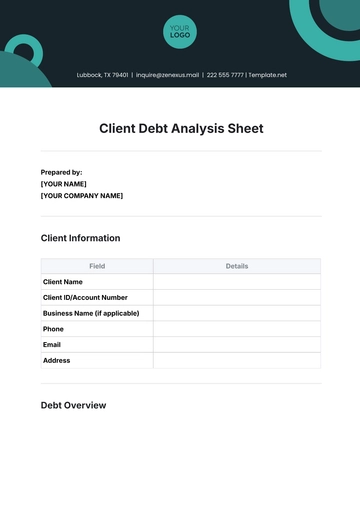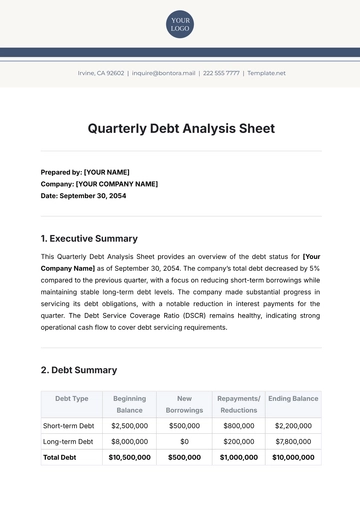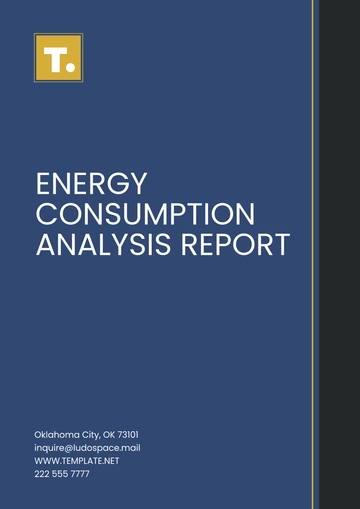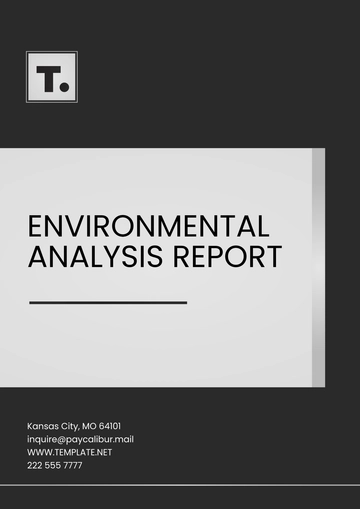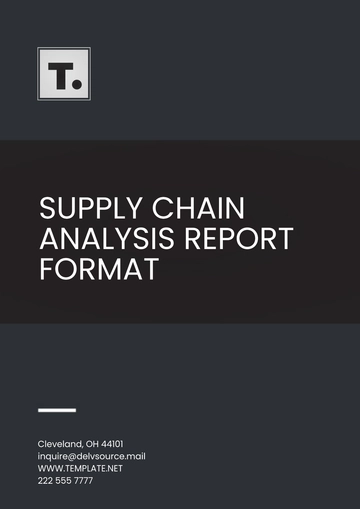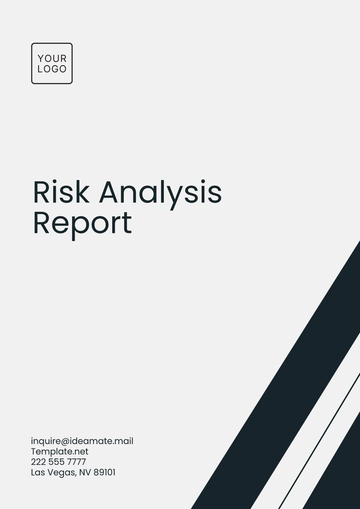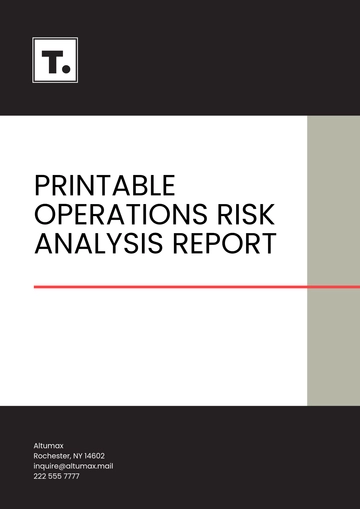Free Full Workplace Safety Analysis HR
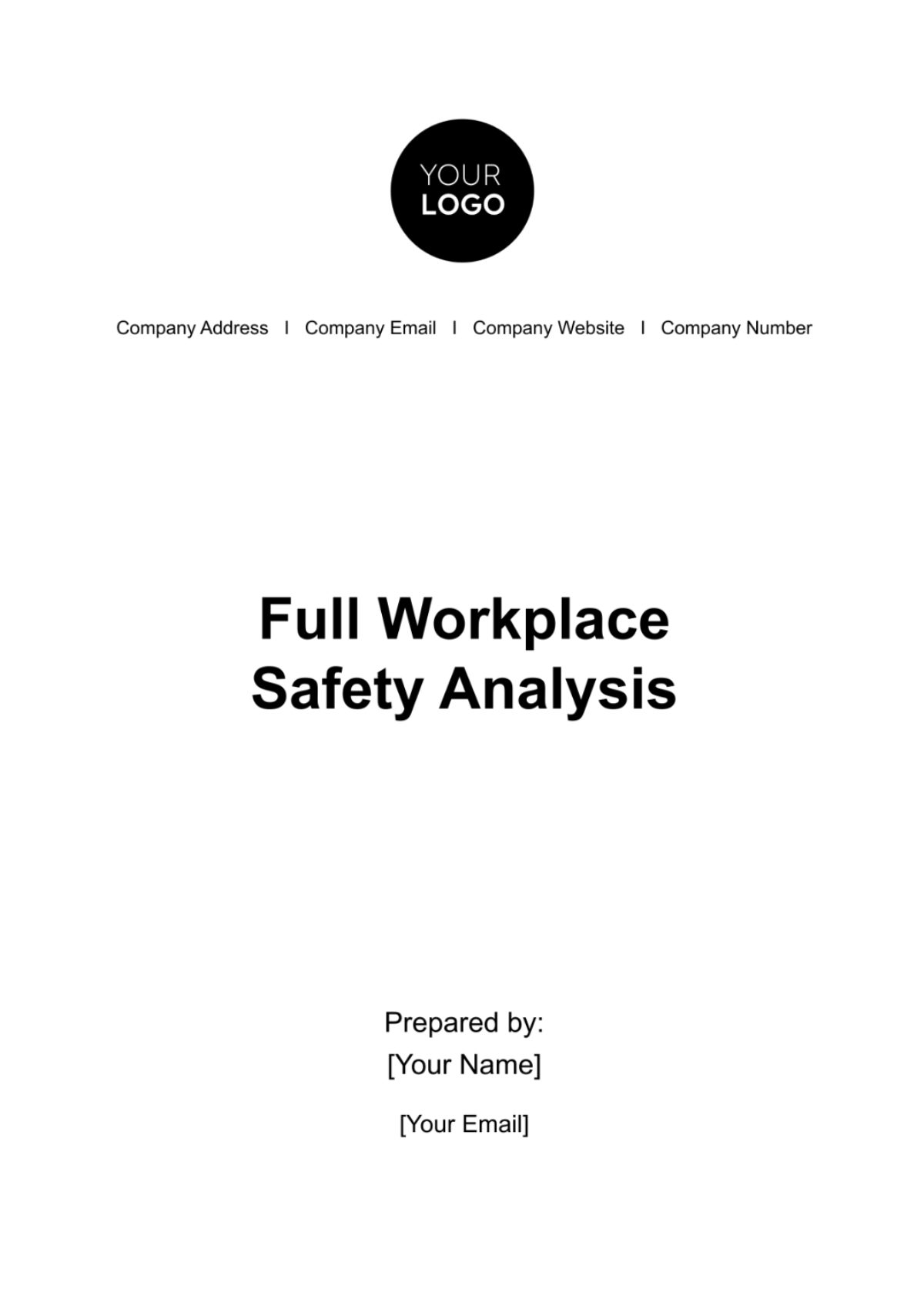
TABLE OF CONTENTS
I. Executive Summary 3
II. Introduction 3
III. Scope of Analysis 3
IV. Hazard Identification 3
V. Risk Assessment 4
VI. Safety Measures and Controls 5
VII. Emergency Response Plan 6
VIII. Training and Education 8
IX. Safety Inspections and Audits 8
X. Incident Reporting and Investigation 9
XI. Safety Culture and Employee Engagement 9
XII. Continuous Improvement 10
XIII. Conclusion 10
XIV. Appendices 10
I. Executive Summary
This Full Workplace Safety Analysis provides a comprehensive examination of safety practices and procedures within [Your Company Name]. Our commitment to employee safety is paramount, and this analysis aims to identify potential hazards, assess risks, and implement effective safety measures. By fostering a culture of safety, we ensure the well-being of our employees and the integrity of our operations.
II. Introduction
Safety is not just a priority at [Your Company Name] - it's a core value. This Full Workplace Safety Analysis serves as a foundational document that outlines our commitment to maintaining a safe and healthy work environment for all employees, visitors, and contractors.
III. Scope of Analysis
This analysis encompasses all aspects of workplace safety, including hazard identification, risk assessment, safety measures, emergency response, training, employee engagement, and continuous improvement. It applies to all facilities, workspaces, and activities conducted under the auspices of [Your Company Name].
IV. Hazard Identification
Effective safety management begins with identifying potential hazards within the workplace. Hazards are categorized into five main types:
● Physical Hazards
Physical hazards encompass any factors within the environment that can cause harm without direct contact. They include:
➢ Slips, Trips, and Falls: Uneven surfaces, cluttered walkways, and wet floors.
➢ Falling Objects: Unsecured equipment or materials at height.
➢ Noise: Excessive noise levels that may lead to hearing damage.
➢ Temperature Extremes: Exposure to extreme heat or cold.
➢ Machinery and Equipment: Unsafe operation or lack of guarding.
● Chemical Hazards
Chemical hazards involve exposure to harmful substances, including:
➢ Hazardous Chemicals: Improper storage, handling, or disposal of chemicals.
➢ Toxic Substances: Exposure to substances that can harm health.
➢ Corrosive Materials: Chemicals that can cause burns or corrosion.
➢ Gas and Vapor Exposure: Inhalation of harmful gases or vapors.
● Biological Hazards
Biological hazards relate to exposure to living organisms or their products:
➢ Pathogens: Bacteria, viruses, and fungi that can cause infections.
➢ Vector-Borne Diseases: Diseases transmitted by insects or animals.
➢ Bloodborne Pathogens: Exposure to blood or bodily fluids.
➢ Allergens: Substances that can trigger allergic reactions.
● Ergonomic Hazards
Ergonomic hazards stem from the design of workspaces, tools, and equipment:
➢ Repetitive Motions: Tasks that require repetitive movements.
➢ Poor Posture: Improper ergonomics leading to discomfort or injury.
➢ Heavy Lifting: Improper lifting techniques.
➢ Inadequate Workstations: Poorly designed work areas.
● Psychosocial Hazards
Psychosocial hazards pertain to factors that affect mental health and well-being:
➢ Workplace Stress: Excessive workload, job insecurity, or interpersonal conflicts.
➢ Bullying and Harassment: Negative behaviors and attitudes.
➢ Work-Life Imbalance: Difficulty balancing work and personal life.
➢ Violence and Aggression: Threats or acts of violence in the workplace.
V. Risk Assessment
To effectively manage workplace safety, it is essential to assess and prioritize risks associated with identified hazards. This risk assessment ensures that resources are allocated efficiently to mitigate potential harm. The following risk matrix is used to assess and prioritize risks:
Risk Matrix:
Risk Level | Likelihood | Consequence | Risk Rating |
Negligible | Rare | Insignificant | Low |
Low | Unlikely | Minor | Low |
Moderate | Possible | Moderate | Moderate |
High | Likely | Major | High |
Extreme | Almost Certain | Catastrophic | Extreme |
VI. Safety Measures and Controls
Once hazards have been identified, appropriate safety measures and controls are implemented to reduce or eliminate risks. These measures are categorized into three main types:
● Engineering Controls
Engineering controls involve physical changes to the workplace to reduce hazards. Examples include:
➢ Machine Safeguards: Installing guards or barriers on machinery.
➢ Ventilation Systems: Ensuring adequate airflow in areas with airborne contaminants.
➢ Ergonomic Workstations: Redesigning workstations for comfort and safety.
➢ Emergency Shutdown Systems: Implementing systems to quickly shut down equipment in emergencies.
● Administrative Controls
Administrative controls focus on policies and procedures to manage risks. These controls include:
➢ Safety Policies: Establishing and enforcing safety policies.
➢ Training Programs: Providing employees with proper training.
➢ Safe Work Procedures: Defining step-by-step procedures for hazardous tasks.
➢ Workplace Inspections: Regularly inspecting work areas for safety compliance.
● Personal Protective Equipment (PPE)
PPE serves as a final line of defense to protect individuals from specific hazards. Employees are provided with appropriate PPE, and usage is mandatory when exposed to potential risks. Examples of PPE include:
➢ Safety Helmets: Protecting against head injuries.
➢ Safety Glasses: Shielding eyes from flying debris or chemicals.
➢ Respirators: Filtering out harmful airborne contaminants.
➢ Hearing Protection: Reducing exposure to excessive noise.
VII. Emergency Response Plan
In the face of unexpected emergencies, having a well-crafted and meticulously executed emergency response plan is paramount. This section serves as a comprehensive guide for various emergency scenarios, outlining procedures to safeguard the well-being of all individuals within our organization.
● Evacuation Procedures
Safety begins with preparedness, and our evacuation procedures are designed to ensure a swift and orderly response in the event of an emergency. Our commitment to your safety includes:
➢ Clear Evacuation Routes: Prominently marked evacuation routes guide you to safety, ensuring that everyone can quickly and confidently find their way out of the building.
➢ Assembly Points: Designated assembly points are strategically located to account for all employees and visitors during evacuations, providing a central location for headcounts and further instructions.
➢ Emergency Contact Information: Easily accessible emergency contact information is readily available to all employees, including important phone numbers for immediate assistance.
To reinforce our readiness, we regularly conduct evacuation drills to ensure that everyone is familiar with emergency exits and the evacuation process.
● First Aid and Medical Assistance
In the event of injuries or medical emergencies, our commitment to your well-being is unwavering. Within our premises, you can expect:
➢ Designated First Aiders: Trained designated first aiders are available on-site, ready to provide immediate medical assistance for minor injuries, illnesses, or medical incidents.
➢ First Aid Kits: Strategically placed first aid kits are stocked with essential supplies to address common medical concerns. They are easily accessible and marked for quick identification.
For more severe injuries or medical situations, procedures are in place to swiftly seek professional medical attention, ensuring that you receive the necessary care and support.
● Fire Safety
Fire safety is a critical aspect of our emergency response plan, and our commitment to your safety includes:
➢ Fire Extinguisher Locations: Fire extinguishers are strategically located throughout the facility, enabling rapid response in the event of a fire-related emergency.
➢ Fire Alarm Systems: State-of-the-art fire alarm systems are in place to detect and alert occupants to the presence of fire or smoke, ensuring early notification and swift evacuation.
➢ Designated Fire Wardens: Trained fire wardens are responsible for coordinating fire evacuations, assisting in the orderly exit of individuals, and accounting for all occupants during evacuations.
➢ Fire Drills: Regular fire drills are conducted to ensure that everyone is familiar with fire evacuation procedures, exits, and assembly points, allowing for a well-coordinated response in the event of a real fire emergency.
● Natural Disasters
Mother Nature can be unpredictable, and our natural disaster response plan is designed to protect you during unforeseen events such as earthquakes, floods, or storms. Our commitment to your safety encompasses:
➢ Procedures for Natural Disasters: Detailed procedures are provided to guide employees through the specific actions to take during natural disasters, ensuring your safety and well-being.
➢ Evacuation Routes: In the event of a natural disaster, safe evacuation routes are clearly marked and communicated, helping you find safety quickly.
➢ Shelter Locations: Designated shelter locations within our facilities are identified, offering protection from the elements and ensuring your safety during the aftermath of natural disasters.
● Hazardous Material Spills
Safety extends to the responsible management of hazardous materials. In the event of a hazardous material spill, we have comprehensive protocols in place, including:
➢ Containment Protocols: Procedures for containing and isolating hazardous material spills are outlined to prevent the spread of contaminants and minimize exposure.
➢ Cleanup Procedures: Safe cleanup procedures are detailed, including the use of appropriate personal protective equipment (PPE) and containment measures to ensure the thorough removal of hazardous materials.
➢ Notification Process: A clear notification process is established to inform the appropriate authorities and stakeholders, ensuring a timely and coordinated response.
VIII. Training and Education
Effective safety training and education programs are integral to mitigating risks and ensuring employee preparedness. This section outlines our approach to safety training:
● Safety Training Programs
Safety training programs are tailored to specific job roles and hazards. Employees receive training on hazard recognition, safe work practices, and emergency response procedures. Training is provided upon initial employment and as needed.
● Training Records
Comprehensive training records are maintained to ensure that all employees have received appropriate safety training. These records include training dates, topics covered, and attendees.
IX. Safety Inspections and Audits
Regular safety inspections and audits are conducted to identify potential hazards, assess compliance with safety measures, and ensure the effectiveness of controls.
● Frequency of Inspections
Safety inspections are conducted [Frequency of Inspections] to address workplace conditions, equipment, and processes.
● Inspection Checklist
An inspection checklist is used to systematically evaluate different aspects of safety, including physical hazards, emergency equipment, and compliance with safety procedures.
X. Incident Reporting and Investigation
Prompt reporting and thorough investigation of incidents are essential for preventing future accidents and improving safety practices.
● Incident Reporting Procedure
Employees are required to report all incidents, near misses, and hazards promptly through our incident reporting system. A designated incident response team reviews and addresses reports.
● Incident Investigation Process
Incidents are investigated to determine root causes, contributing factors, and corrective actions. Investigation findings are used to prevent similar incidents in the future.
● Lessons Learned
Lessons learned from incidents and near misses are communicated throughout the organization to improve safety awareness and practices.
XI. Safety Culture and Employee Engagement
A positive safety culture is fostered through employee engagement and collaboration.
● Safety Committees
Safety committees, composed of representatives from different departments, meet regularly to discuss safety concerns, suggest improvements, and review incident reports.
● Employee Feedback
Employees are encouraged to provide feedback on safety practices, hazards, and suggestions for improvement through our feedback system.
● Recognition and Rewards
Outstanding safety performance is recognized and rewarded to incentivize safe behaviors and practices.
XII. Continuous Improvement
Safety is an ongoing process of improvement and refinement.
● Safety Goals and Objectives
Clear safety goals and objectives are established annually, aligning with our commitment to continuous improvement.
● Performance Metrics
Key performance indicators (KPIs) are tracked to measure safety performance, enabling us to identify areas for improvement and take corrective actions.
XIII. Conclusion
This Full Workplace Safety Analysis demonstrates our dedication to maintaining a safe and healthy work environment at [Your Company Name]. By proactively identifying hazards, assessing risks, implementing controls, and fostering a culture of safety, we ensure the well-being of our employees and the success of our organization.
XIV. Appendices
The appendices contain additional information and resources related to workplace safety:
● Hazardous Materials Inventory
An inventory of hazardous materials used within the organization.
● Emergency Contact Information
Contact details for emergency services, medical facilities, and key personnel.
● Safety Equipment Inventory
An inventory of safety equipment and its locations within the workplace.
● Training Materials
Training materials and resources used in safety training programs.
- 100% Customizable, free editor
- Access 1 Million+ Templates, photo’s & graphics
- Download or share as a template
- Click and replace photos, graphics, text, backgrounds
- Resize, crop, AI write & more
- Access advanced editor
Our Full Workplace Safety Analysis HR Template is your comprehensive solution for evaluating, enhancing, and maintaining workplace safety. With detailed sections, risk assessment tools, and actionable insights, this template empowers you to safeguard your organization, employees, and stakeholders effectively. Stay proactive and ensure a secure work environment with this template.
